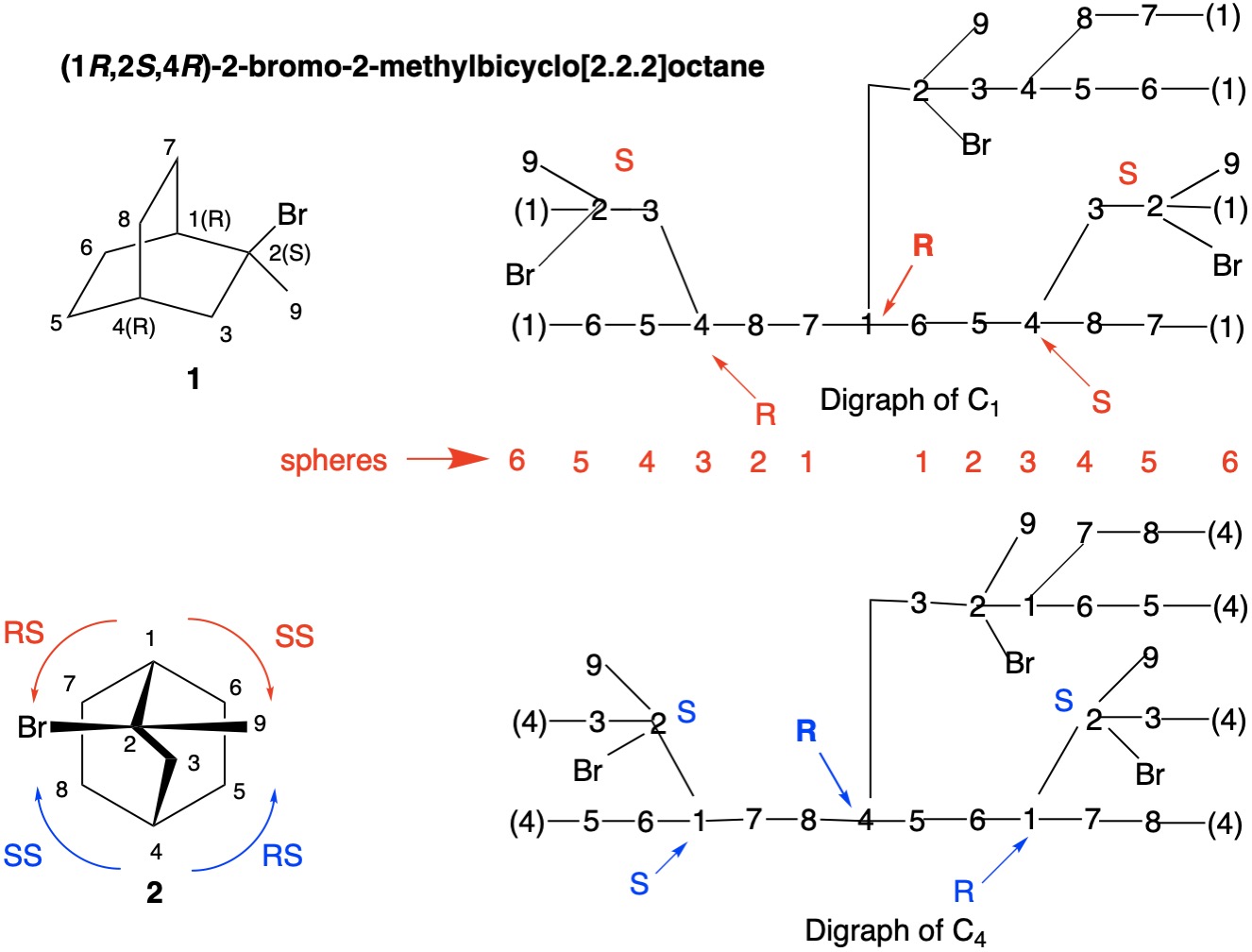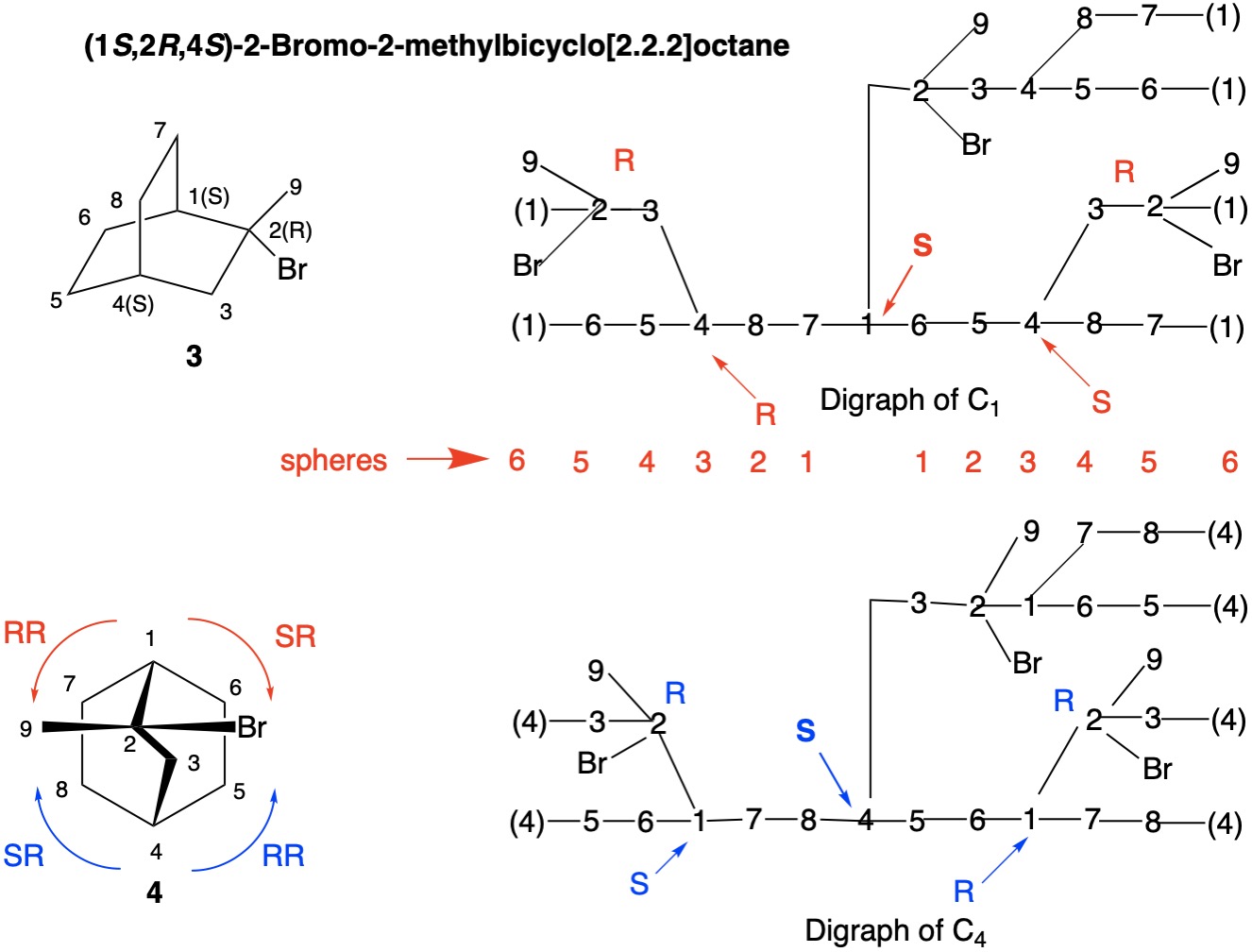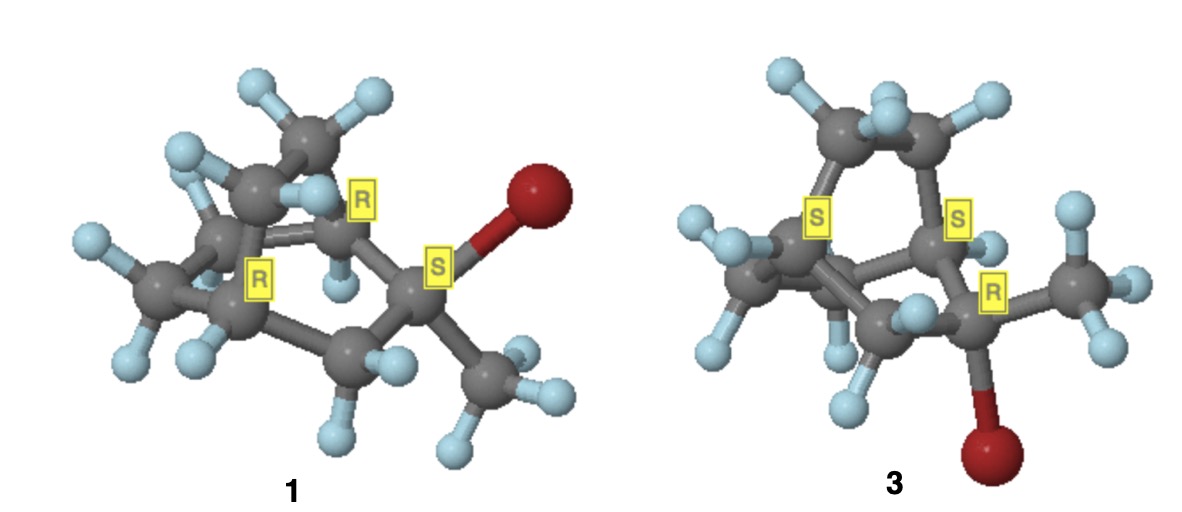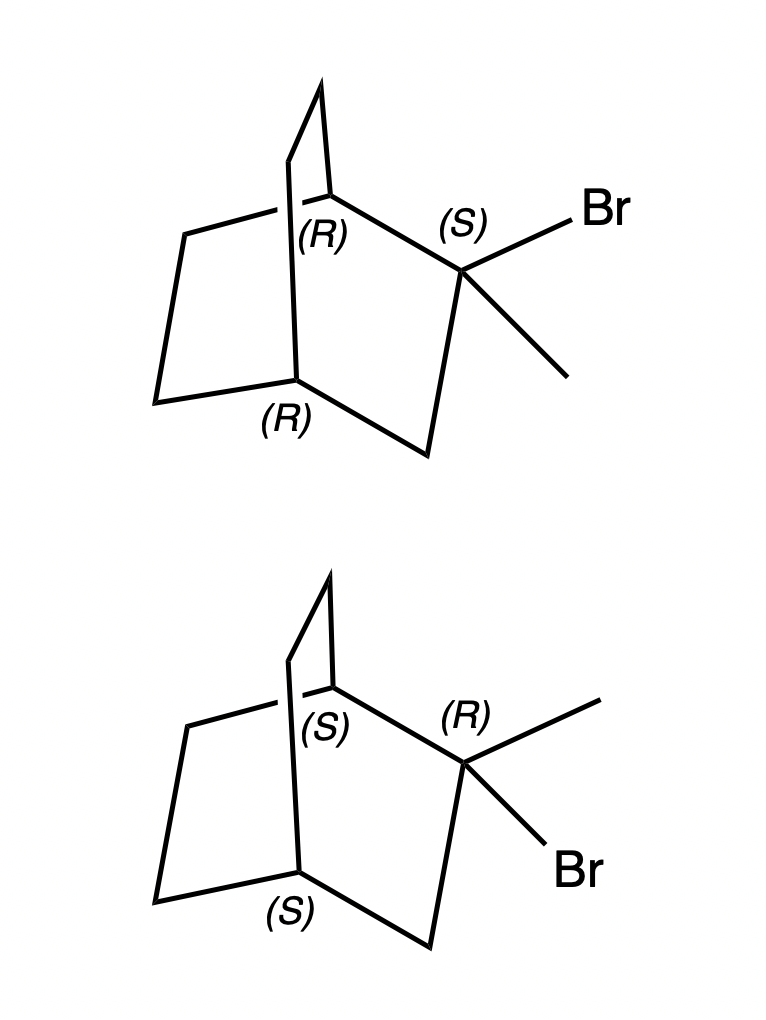Several days ago I offered a solution to the R/S assignment of the bridgehead carbons of (1R,2S,4R)-2-bromo-2-methylbicyclo[2.2.2]octane 1. During the middle of the night I realized that the method was faulty because the solution would not accommodate the (1S,2R,4S) enantiomer 3 but would rather predict (1R,2R,4R) which clearly is a non-existent diastereomer. The shortcoming lay in not applying, in a heirarchical sense, CIP rule 4b (RR/SS>RS/SR) over rule 5 (R>S).
Focusing on bromide 1, the configuration of C2 is "S" with Br>C1>C3>C9. Structure 2 is structure 1 from a different perspective to which we will refer during the ensuing discussion. To determine the configurations of the bridgehead carbons, C1 and C4, a digraph is the method of choice. In the "Digraph of C1" one starts at the non-duplicate atom C1 and traces the six possible paths back to duplicate atoms C(1) that are each attached to three phantom atoms of atomic number zero. The vertical chain has the top priority while the hydrogen (not shown) at C1 has the lowest priority. The two horizontal chains are mirror images as far as the atom connectivity is concerned and they must be assigned to the second and third priorities. In these chains C2 has been predetermined as having the S-configuration. Locate C4 in the left chain. It has the R-configuration because C3>C8>C5. Locate these atoms in structure 2 and convince yourself. [I use my hands. Point your right thumb from C4 to H and your fingers will point from C3 to C8 to C5]. In the right hand chain C4 has the S-configuration because C3>C5>C8. Check these priorities in structure 2.
Now the left hand chain is designated as RS and the right hand chain as SS. Since RR/SS>RS/SR, the order of carbon atoms attached to non-duplicate C1 is C2>C6>C7. Locate these atoms in structure 2 and convince yourself that C1 does indeed have the R-configuration!
Look at "Digraph of C4". Now that you are versed in the method, the priorities around non-duplicate C4 are C3>C8>C5 because C3-chain>SS>RS>H. C4 also is of the R-configuration! <continued>

The digraphs below confirm the assignments to the enantiomer 3 (4), (1S,2R,4S)-2-bromo-2-methylbicyclo[2.2.2]octane. I'll leave the analysis to the reader.






